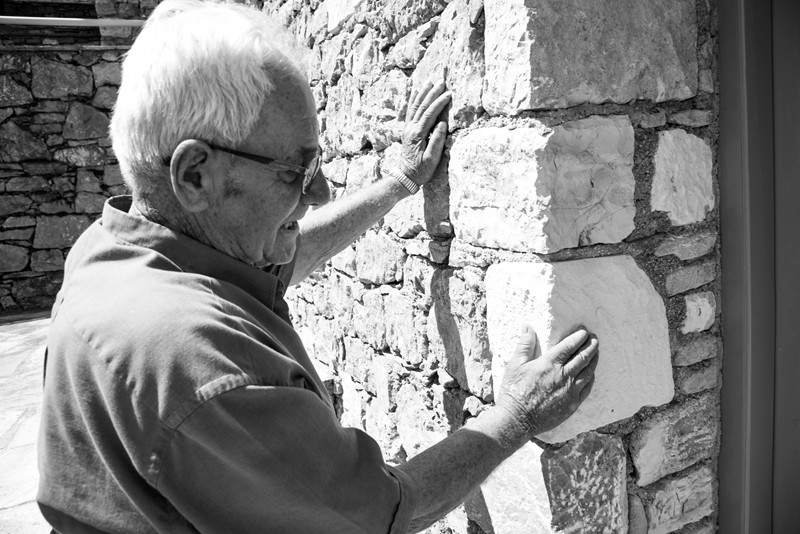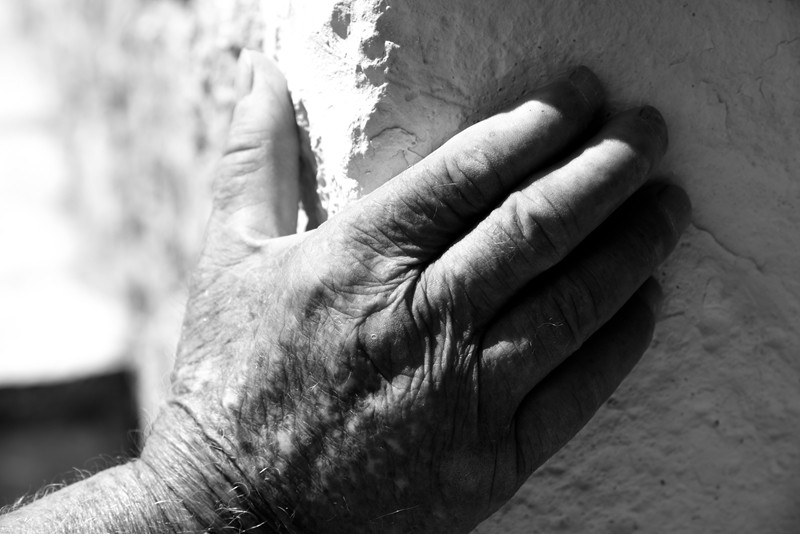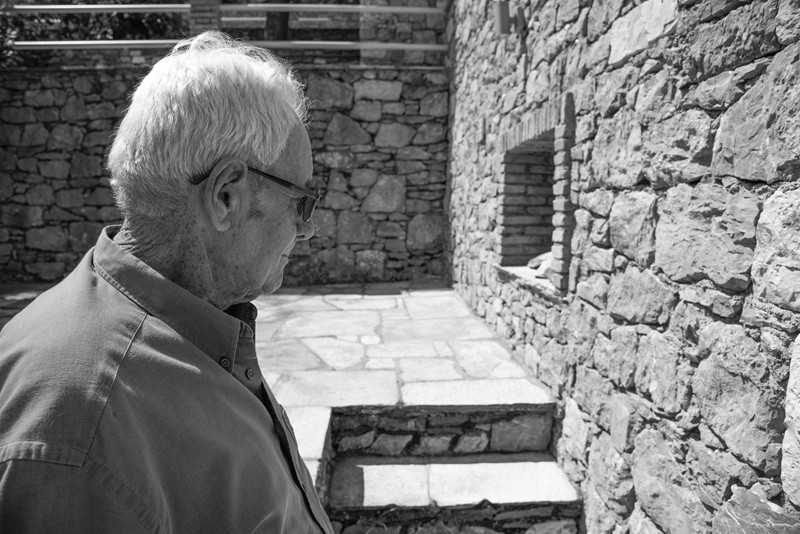HISTORY
HISTORIES
Alonissos is an island with long history. Its history is lost in the depths of the Paleolithic era where traces and remnants of human civilization were found. During that time period Alonissos and the surrounding islands were likely to be part of the mainland and incorporated to the geographical region of Thessaly. According to mythology, the Sporades were created by a rock fight that broke out between the Titans Otus and Efialtes. In particular, the rocks they threw to each other ended up in the sea, thus creating the Sporades islands that right now decorate the emerald sea.
What many people may not know is that, during the antiquity, the island was named Ikos, and Alonissos was the name that was used by the ancient Greeks, probably for the neighboring island, north of Kyra Panagia. The present Alonissos took its name during the first years of Greek liberation, whilst in the Middle Ages and until the 19th century, the island was known as Liadromia that comes from the corruption of the words Diadromia and Diaporia (a cluster of rocky islands, with small channels between them which allow ships to pass).
According to history and tradition, our island had always been appealing to heroes and leading figures of ancient times. Among these figures were the Cretans who led by Stafilos, turned Ikos into a Minoan settlement, while not too much later when the island adapted a Mycenaean character, Peleus (Achilles’ father) came to Ikos determined not to leave the island until the very last day of his glorious life. Other mythic figures that passed from the island were Jason and the Argonauts and the Achaeans on their way to Troy.
It was not a coincidence that all these figures settled or passed from the island. Alonissos or Ikos has, since antiquity, a position of great geostrategic importance. In general the area of Northern Sporades was an important seaway passage, ideal for pirate attacks, havens and hideouts. That is the reason why there have been found numerous shipwrecks throughout the years in the particular area. Therefore piracy is a phenomenon that has stigmatized the historical outcome of the island. This phenomenon it is said to have been started by the Dolopes, an ancient piratical tribe and lasted up until 1944. The threat and the fear that pirated spread to the inhabitants, made them desert their homes and towns by the seaside such as Kokkinokatro and relocate themselves on the hilltops. That’s how the Old Village became the main town until 1965 that was damaged by the earthquake.
Finally, apart from the pirates, in the modern times Alonissos was conquered by the Romans, Franks, Veneti, and Turks.
Summing up, Alonissos constitutes a land of great history including heroes, shipwrecks, ancient towns lost in sea, etc. What is magic about this island, is that due to the purity that radiates, it gives you the feeling that you live back at those times.
The bay of Agios Petros was named after the byzantine monastery that existed to its left, northeast of the vala. It is estimated that it was built between 900 CE and 950 CE and was totally destroyed around 1200 CE by the Crusaders. The refusal of the monks to submit to the authority of the Pope resulted in the destruction of the monastery to its foundations. Others say that the monastery was destroyed during a pirates’ raid. Today there are no longer artifacts: parts of its foundations (it is said that its length was 35 meters) were saved until the end of the 19th century and the testimonies of the old people report that the construction of the weight-bearing wall was of remarkable strength. The stones and wood from the surrounding area were the main elements of the construction, along with the adhesive substance for the connection of the materials. This was lime, mixed with ashes from the chimneys of the old kilns used for the production of charcoal and with admixture of pottery. This highly technical construction has proven its endurance for over 1000 years since many monasteries in Greece have been preserved intact until present times. The monastery housed dozens of monks who were involved daily with the cultivation of vegetables in gardens (green beans, tomatoes, peppers, okra, garlic, leeks, etc), vines for the production of Alonnisos wine, famous since ancient times, apiculture, and the cultivation of wheat, barley and corn etc. The cultivation expanded over the flat ground of Agios Petros and towards the cape, on the southeastern side to the sea, today property of the Vlaikos and Manios families.
Agios Petros has been the meeting place for hundreds of goats (maybe thousands, many centuries ago) that were led by the shepherds of the area to quench their thirst. The monks had a large well there, known since the olden days, and next to it there was a drainpipe built with lime about which there is an old saying “thousands of goats were drinking water and it couldn’t dry up”. According to narrations the well had a mechanism of collecting the water with a counterweight and rotation so the water could end up in the drainpipe immediately.
Agios Petros was crossed by the pathway that joined the settlements and the areas. The villagers crossed it with their mules and their donkeys in order to reach the small coastal settlement of Steni Vala (Narrow Vala), vice versa in order to go to the rural settlement of Isomata and also to reach the end of the route at Chora (the Old Village) which was the main settlement and the capital of the island, situated at its western end. The pathways were adjusted to accommodate the uneven and sloping terrain by “kagkelia”8 that helped to ease the difficult slopes. The small sandy/pebbled beach at Agios Petros, 200 meters in length, was on the pathway and also the caiques and boats of those times landed at the beach to enable the transportation of the agricultural harvest and the dairy and animal products (cheese, mizithra, meat etc).
Since the beginning of the previous century, Agios Petros is mainly a byword for the history of three families: those of Vlaikos, Manios and Gioulis. It is here that they put down roots, created their own agricultural economy, initially inhabited small huts (kalivia) for the summer period and for the collection of fruit, fished from their little wooden boats in order to supplement their nutrition. It is here where they made their plans, had their dreams, raised their families and lived their lives.
After the destruction of the monastery and until 1900-1920, a few vines and stockbreeding were the main occupations of the area. After the three families came and established themselves, the farming of the land and the creation of small olive groves developed. With hard work and a great deal of effort, the olive groves flourished and a land capable of cultivation was created and the olive tree became the dominant cultivar species, mainly on the sheltered, flat areas of the region.
A landmark in the history of Agios Petros came in 1940, with the beginning of the 2nd World War. The decision of the Vlaikos family to settle in Agios Petros for 8 years changed the physiognomy of the area until 1948, at which time they returned to their home in Chora, the main settlement of Alonissos. The family, with much effort, worked the land mainly by the cultivation of olive trees, since olive oil and olives comprised the main ingredients of survival of that time. Nature abundantly provided water since two wells, one with slightly brackish water in the inner part of the area would be used to water the crops and the other, a community well on the beach, would provide the residents with drinking water. At the same time, on the slopes south east and towards the cape, pieces of land for the growing of vines were opened up (subsequently the Manios family successfully cultivated vines on the less hilly part of the vala). Lemon, almond, pear, fig, bitter orange, and plum trees etc complimented the food chain and the economy of the family, so this on this holy land the earth and the fruits of the sea managed to keep alive the parents and their children, in order for them to survive and fulfill their dreams.
After the end of the war the families returned home to their houses in the Old Village (Chora) but they kept intact the cultivations that they had created at Agios Petros and they improved their residences with extensions, storage rooms etc. By the end of the 1980’s the children of the families had already grown up, got married and had their own children, the third generation of Agios Petros. In these years and after the estates were divided, new residences were built for personal and recreational reasons although the fields were preserved in a good condition and the olive trees were maintained to provide olive oil for domestic family use. So historically, from a small hut in the 1940s, there were about 6-7 residences for the children of the second generation in the 1980s.
In the decades of 1990 and 2000 the historical physiognomy of this little vala basically changed, as actually happened to almost all of the islands in our country. The children of the third generation, along with their parents, transformed the residencies and added new ones aimed at tourist development and exploitation of the natural resources of the area. The unique beauty of the vala, the tranquility, the clean sea, the natural wealth and its position in one little secured cove, became strong points of attraction for people who sought to rest and enjoy all these benefits of nature from spring until autumn.




CONSTRUCTION OF HOUSES
In 1998, Takis (Panagiotis) Vlaikos, a third generation child of the family of Nikos Vlaikos of Agios Petros, together with his wife Christina Kratsi who comes from the most southeastern island in the Aegean Sea, the small and picturesque Castelorizo, decided to invest in their land with good workmanship and a desire to maintain historical standards without resorting to financial and technical analysis of “cost and profit”, thus leaving in this way a cultural heritage for the next generations.
My father Nikos Vlaikos, the second generation of the family and the youngest son of my grandparents, was in charge of the realization of the plan. My father, since he was a small child, had knuckled down to agricultural work - the arduous tasks of dealing with nature. At Agios Petros day by day, meter by meter, from the beginning of the previous century until the 1950s, they managed to create most of the cultivable lands that exist today. After some time, Nikos Vlaikos moved to Athens for a better life, for better opportunities. He became a builder on small-scale construction sites, and developed into an experienced stone mason specializing in the use of the stones for paving, stone cladding, traditional fireplaces and barbecues. The stone is hewed with patience and love: you can speak to it and it responds, you can carve it, transform it and it rewards you generously by giving you an incredible sense of simplicity, of unembellished plainness and the impressive presence of knowledge and years of experience. It is the traditional art of the stone-mason that fewer and fewer people know nowadays.
With my father’s skills and craftsmanship we tried to create something on our land that would have its own tale to tell once one looks at the stone walls of the house, the style and placement of the stones, the carved corners and the openings of the doors and windows. The walls, the stone balcony and the ledge benches, the small stone walls (“avragies”)9 that protect the trees in the fields, all together whisper the history of Agios Petros. They are here to speak about the lives of our families, the sounds of the children playing in the fields and at the beach, the collection of the olives in the winter. The construction of the houses started in 1998 with the concomitant transformation of the surrounding area and the reinforcement of the old stone walls of the fields. Our main construction material was the stone that came from the excavation of the fields in Agios Petros. The cornerstones, those large stones that are carved artistically in order to provide a square or parallelogram, came from two sources.
First of all from the stock that was kept in my father’s treading tank at his residence, and these date back to the year 1940. My great grandfather, old Gorgos (the father of my mother Marigo), was the owner of a quarry with cornerstones (a family business that mined raw material), which was the basic element of construction at those times. The quarry ceased operating when concrete, cement and adhesive construction materials arrived on the island and replaced the traditional construction materials. A few cornerstones of Agios Petros came from landslides and geological transformations which historically happened at Spartines: these were carried from Spartines on our old boat. The construction of the first house was completed in 2002 and that of the second house in around 2004. The third house (Skinos Villa) will be completed in the years to come. Throughout all these years our efforts in constructing the houses was great. We achieved buildings that not only respect our traditions and which are totally assimilated into the space available, but which also blend into the natural landscape.
This was actually our commitment from the very beginning, to avoid disrespecting the surroundings by inappropriate positioning or by the use of construction materials which didn’t harmonize with the landscape. By being in harmony with nature, by having a sympathetic approach with respect to the size and positioning, by the use of natural materials and by using traditional methods and craftsmanship, we believe that we kept at least to our part of the bargain! You too should come and enjoy the work of our parents and ancestors: touch the carved stones, sit on the ledge benches, look at the olive trees around you. Experience your vacation as a journey through time, a friendly conversation with the passage of the years. Even if these traditions and values become a part of your lives for just a moment they will, hopefully, remain a vivid memory and you will then have shared those things which give us joy.”

